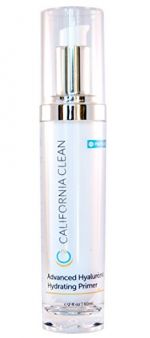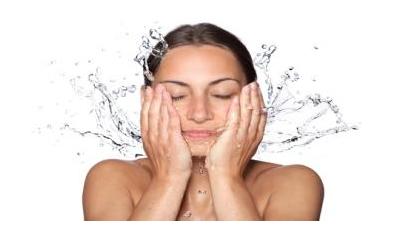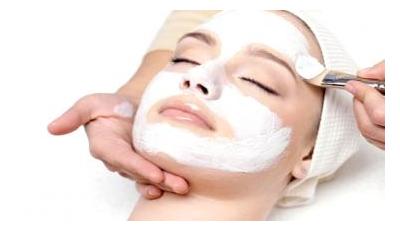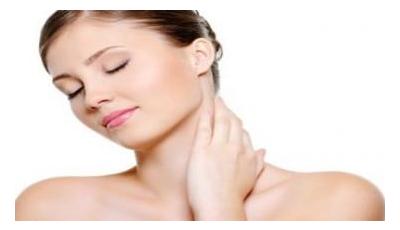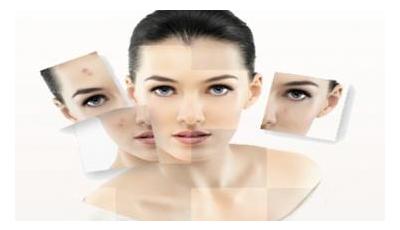Hyaluronic acid (HA) is an organic molecule that forms part of your skin’s structure. It is important for the overall health of your skin. Cosmetic products containing HA can help reduce acne breakouts and scars.
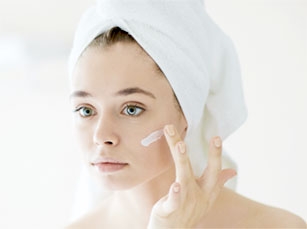
”Premature aging of skin is the result of repeated and extended exposure to UV radiation. Approximately 80% of facial skin aging is attributed to UV-exposure” (NIH.gov)

What is Hyaluronic Acid?
Hyaluronic acid, also called hyaluronate or hyaluronan, is a type of glycosaminoglycan (GAG).1 GAGs are long chains made of multiple sugar molecules linked together. They are water soluble and elastic. Your body uses GAGs for structural support and as lubricants.
HA is produced by cells all throughout your body. It is particularly abundant in your connective tissues, such as your skin. Cells secrete HA and other GAGs as a part of the extracellular matrix.1 This matrix is a network of proteins and other structural molecules that give strength to the tissues in your body and provide a scaffold for your cells to attach to.
Our Recommendation: C2 California Clean Advanced Hyaluronic Hydrating Primer serves as a great primer under makeup without causing acne.

Hyaluronic Acid Keeps Your Skin Healthy
Half of all the HA in your body is located in your skin. There, it forms part of a tough but stretchable barrier that keeps germs and toxins out of your body while keeping water and other important substances in.
Similar to collagen, HA helps keep your skin strong and flexible. It is also important for keeping your skin hydrated by holding moisture in. As an integral structural component, HA is important for wound-healing and rebuilding damaged skin.2 A low amount of HA in your skin can contribute to blemishes like acne and wrinkles.3
Our Recommendation: InstaNatural Hyaluronic Acid Serum serves as a great primer under makeup without causing acne.

Managing Acne Breakouts with Hyaluronic Acid
Your skin’s natural HA is damaged by breakouts of acne vulgaris. The most common bacteria that causes acne breakouts, Propionibacterium acnes, breaks down skin components. It secretes an enzyme which specifically degrades HA, contributing to the skin damage caused by pimples.4 Taking HA orally as a supplement or using a cosmetic product containing HA can help reduce the damage caused by acne.
Different skin conditions often can cause others to develop and can make each other worse. One example of this is dry skin. Low skin moisture can reduce your skin’s ability to resist pathogens and inflammatory conditions. Having dry skin can enable infections by demodex mites or acne-causing bacteria and can exacerbate inflammation.
Unfortunately, common facial cleansers to treat acne can make your skin more dry as they remove oil. Because of this, skin care regimens for acne often include a combination of a face wash and a mild moisturizer. HA has moisture-retaining properties that make it useful as a gentle moisturizer for acne care.5 Look for non-oily lotions or creams that contain HA if you are managing an active breakout.
Our Recommendation: Paula's Choice BOOST Hyaluronic Acid Booster

Hyaluronic Acid Injections Help Fade Acne Scars
The inflammation from severe acne breakouts can eventually have long-term effects on your skin. Acne lesions can disrupt the structural matrix, and inflammation can cause it to break down. This can lead to scarring, creating rough and uneven skin on your face. The type of scar typically caused by acne is known as atrophic scarring, where damaged skin fibers leave dimples or pock marks.
Acne scars are often treated with injectable fillers. These fillers plump up your skin and fill in indentations like atrophic scars or wrinkles. HA gel is a good choice for a filler that dermatologists are using more often these days. Since it is a natural skin component, it safely fills in skin and even promotes new skin growth. It is effective in fading scars and creating smoother, fresher-looking skin of any complexion.6-8

[1] A Fallacara, E Baldini, S Manfredini, and S Vertuani. 2018. "Hyaluronic Acid in the Third Millennium." Polymers. 10(7):701. https://www.ncbi.nlm.nih.gov/pmc/articles/PMC6403654/
[2] WY Chen and G Abatangelo. 1999. "Functions of hyaluronan in wound repair." Wound Repair Regen. 7(2):79-89. https://www.ncbi.nlm.nih.gov/pubmed/10231509
[3] E Papakonstantinou, M Roth, and G Karakiulakis. 2012. "Hyaluronic acid: A key molecule in skin aging." Dermato-endocrinology. 4(3):253-258. https://www.ncbi.nlm.nih.gov/pmc/PMC3583886/
[4] S Nazipi, K Stødkilde-Jørgensen, C Scavenius, and H Brüggemann. 2017. "The Skin Bacterium Propionibacterium acnes Employs Two Variants of Hyaluronate Lyase with Distinct Properties." Microorganisms. 5(3):57. https://www.ncbi.nlm.nih.gov/pmc/articles/PMC5620648/
[5] L Chularojanamontri, P Tuchinda, K Kulthanan, and K Pongparit. 2014. "Moisturizers for Acne: What are their Constituents?" The Journal of clinical and aesthetic dermatology. 7(5):36-44. https://www.ncbi.nlm.nih.gov/pmc/articles/PMC4025519/
[6] O Artzi, S Cohen, A Koren, R Niv, and O Friedman. 2019. "Dual-plane hyaluronic acid treatment for atrophic acne scars." J Cosmet Dermatol. https://www.ncbi.nlm.nih.gov/pubmed/31074185
[7] C Dierickx, MK Larsson, and S Blomster. 2018. "Effectiveness and Safety of Acne Scar Treatment With Nonanimal Stabilized Hyaluronic Acid Gel." Dermatol Surg. 44 Suppl 1S10-s18. https://www.ncbi.nlm.nih.gov/pubmed/30358630
[8] T Patel and O Tevet. 2015. "Effective treatment of acne scars using pneumatic injection of hyaluronic acid." J Drugs Dermatol. 14(1):74-6. https://www.ncbi.nlm.nih.gov/pubmed/25607911
-
Face Washes for Acne
By Dr. KarenDecember 28, 2021 -
Acne Scar Removal
By Dr. KarenDecember 28, 2021 -
Laser Treatment for Acne
By Dr. KarenDecember 28, 2021 -
Back Acne
December 29, 2021 -
Acne Vitamins
By Dr. KarenMarch 8, 2022
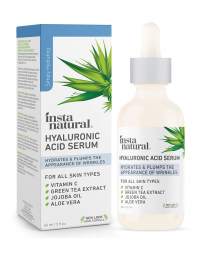

Search the blog
Article Categories
- All Articles (95)
- Rating Charts (1)
- Beauty & Skincare (17)
- FAQ (0)
- Hair Care (9)
- Health & Wellness (12)
- Anti-Aging (4)
- Kid's Health (0)
- Makeup (2)
- Men's Health (2)
- Oral Care (3)
- Sunscreen (7)
- Skin Tools & Treatments (10)
- Supplements (26)
- Videos (0)

